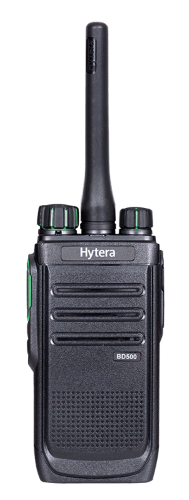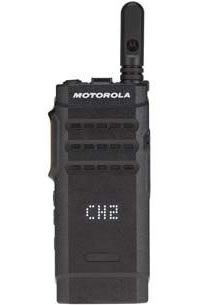Licences for Two-Way Radios - Do You Need One?
 13th Nov 2023
13th Nov 2023

 Released On 6th Mar 2023
Released On 6th Mar 2023
Educational institutions prioritise student safety and efficient campus management, requiring swift and reliable communication, often over a wide area or multiple sites, among various stakeholders including teaching and support staff, governing bodies, and volunteers.
Find out why a robust two-way radio system is best to achieve your communication goals in schools, colleges and university campuses. We explain why licensed radios make more sense than licence-free radios (walkie-talkies), and why mobile phones might not meet a school or college’s needs.
If you're ready to shop, we've dedicated a section to walkie-talkies that are suitable for education settings.
From the smallest pre-school setting to the largest university campus, there are a number of situations where rapid communication is required. Many involve the prevention of safety- or security-related incidents, or assisting with a situation effectively if it happens.
 Licensed radios are a resilient, easy-to-operate communication system with a number of advantages:
Licensed radios are a resilient, easy-to-operate communication system with a number of advantages:
Reduced response times: There’s no dial-up time, or waiting for the recipient to answer. Simply push a single button and transmit your message instantly.
One-to-one, or one-to-many calling: Messages can be transmitted to one person, to a specific group of users, or to everyone simultaneously. We can help you programme your radios to suit your needs.
Reliable coverage: Licensed radios provide reliable coverage over a wide site, or multiple sites, including indoor or outdoor transmission, built-up areas and challenging terrain.
Advanced features: They benefit from more advanced features, either built-in or programmable, which can improve safety and security at your school, college or university campus. For example:
Robust and durable: The majority of two-way radios are built to withstand harsh environments, and can easily endure the occasional knock, drop or splash with water. Compare this to the relative fragility of a mobile phone!
Privacy: Users of licensed radios have their own, dedicated channels. Communications that may contain sensitive information about students are encrypted and secure, with no danger of unauthorised “eavesdroppers”. This is particularly important to ensure that child safeguarding policies and Data Protection regulations are complied with.
Mixed-mode operation: On large sites, it’s possible there may be a mixture of analogue and digital radios. Most licensed two-way radios can operate in either mode without having to change channel. This means you can migrate gradually from an analogue system to a digital one, as budgets permit, so you don’t need to purchase a complete system outright.
A scalable system: A radio system can be easily expanded to include other handsets as your needs change.
For most of the reasons we recommended licensed two-way radios in a professional situation, you can more-or-less say the opposite about licence-free radios (also called walkie-talkies, or PMR446 radios because of the channel they operate on – learn more here).
Group calls and privacy issues: As a rule, you can’t set-up group calls on licence-free radios, although it hardly matters, because anyone can listen in! If someone is within range, your transmissions on a licence-free radio are not private. There are two obvious drawbacks here:
Lower power means limited range: Licence-free radios are generally low-powered and have more limited coverage than their licensed counterparts. If your school or college campus is in a built-up area, over multiple sites or in difficult terrain, they will struggle to cope.
Basic functionality: Walkie-talkies are fairly basic and tend not to have too much extra functionality. They can’t compare with the safety features that you’ll benefit from with licensed radios, and they won’t offer mixed mode operation for analogue and digital handsets.
Everyone has a mobile phone, and most people keep them close by, so why aren’t they a good communication solution in an educational setting?
No group calling: Phone calls via the 4G or 5G networks only permit one-to-one calls, which isn’t very helpful in an emergency situation.
Push-to-talk over cellular (POC) devices are growing in popularity, however. An app, downloaded to your smartphone, gives it some of the functionality of a two-way radio, for example, group calls (learn more about POC radios and our Connect Plus app).
Delays: Dialling from phone to phone involves looking up a person’s phone number, dialling it, and then waiting for the person you’re calling to pick up. It’s not an instant connection like two-way radios. Precious seconds are lost, and in an emergency, every second counts.
Coverage issues: Not everyone is on the same mobile phone network, and not every network has good coverage in all locations. How can you guarantee that everyone will receive important or urgent messages and calls?
Call credit required: Mobile phone data and network charges must be monitored carefully to be sure all staff have adequate credit to make or receive calls, whereas licensed two-way radios ensure unlimited transmission time (subject to battery life, of course).
 Our shop dedicates a whole sector for recommended walkie-talkies for schools and colleges, but here are are few worthy models that ought to get a special mention:
Our shop dedicates a whole sector for recommended walkie-talkies for schools and colleges, but here are are few worthy models that ought to get a special mention:
Hytera BD505 DMR digital radio
Please get in touch for free and friendly advice.
 13th Nov 2023
13th Nov 2023
 13th Aug 2019
13th Aug 2019
Stay up to date with the latest from RadioTrader